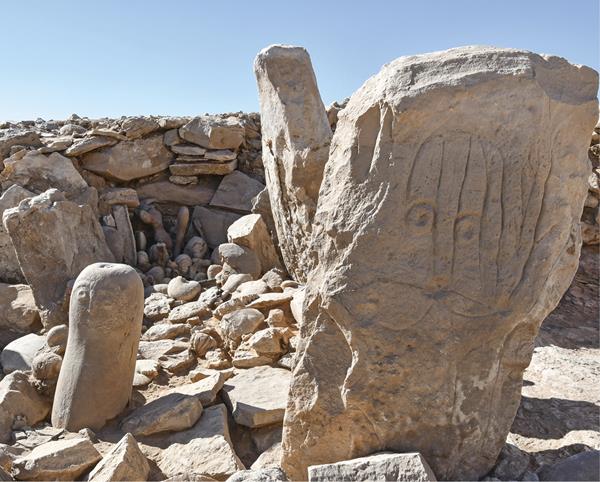
While excavating ancient Neolithic hunting traps in Jordan’s southeastern desert near the site of Jibal al-Khashabiyeh, a team from the French Institute of the Near East and Jordan’s Al-Hussein Bin Talal University, co-directed by Wael Abu-Azizeh and Mohammad Tarawneh, made a unique discovery that sheds light on daily life and religious belief in the prehistoric Levant. The traps, known as “desert kites,” were used extensively throughout prehistoric southwestern Asia. Although most have been dated to the fourth and third millennia B.C.E., the kites from Jibal al-Khashabiyeh date more than three millennia earlier, making them one of the earliest large-scale human constructions. Now, the team has discovered a ritual complex associated with one of the kites.
The unique ritual complex, which dates to around 7000 B.C.E., resembles a miniature desert kite. Inside were found two anthropomorphic stone figures. The taller figure stands 3.5 feet high and bears a depiction of a human face and possibly a drawing of a hunting trap. The smaller figure is a little more than 2 feet tall and features a stylized but finely carved human face. The excavation also uncovered nearly 150 marine fossils, a variety of unusually shaped stones, animal figurines, worked flint objects, and a possible stone altar.
Already a library member? Log in here.
Institution user? Log in with your IP address.

